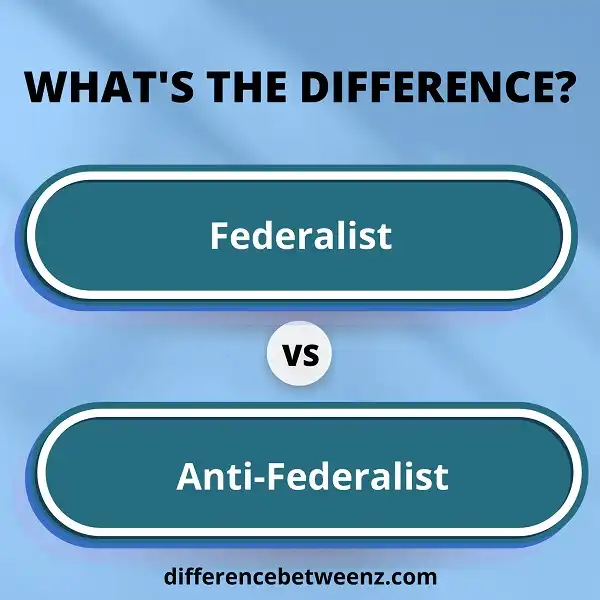The Federalist Papers are a collection of 85 essays written by Alexander Hamilton, James Madison, and John Jay in defense of the Constitution. The Anti-Federalist Papers are a series of essays written by opponents of the Constitution. The two groups debated each other extensively in the run-up to ratification. While there are some similarities between the two groups, there are also many differences. This article will explore those differences.
What is Federalist?
Federalist, the supporters of the Constitution of the United States of America, was led by Alexander Hamilton. Federalists believed in a strong central government with broad powers. They wanted a government that could act quickly and decisively to solve problems. Federalists did not want the states to have too much power because they thought that would lead to disorder and chaos. The Federalist Party was succeeded by the Democratic-Republican Party. Federalist ideas are still influential in American politics.
What is Anti-Federalist?
Anti-Federalism was a late-18th century movement that opposed the creation of a stronger central government. At the time, the United States was comprised of 13 separate states, each with its own government. The Anti-Federalists believed that a central government would erode the power of the individual states and lead to tyranny.
They were particularly opposed to the Constitution, which they felt gave too much power to the federal government. The Anti-Federalists had some success in slowing down the ratification of the Constitution, but ultimately they were unsuccessful in preventing it from taking effect. Today, the term “Anti-Federalist” is used to describe anyone who opposes a strong central government.
Difference between Federalists and Anti-Federalists
Federalists and Anti-Federalists were two political groups who disagreed about how the United States government should be run. Federalists believed in a strong central government, while Anti-Federalists wanted more power to be given to the state governments. Federalists were worried that the country would be too chaotic if each state had its own laws, while Anti-Federalists thought that the federal government would become too powerful if it had too much control. Ultimately, the Federalists won out and the Constitution was ratified. However, the debate between Federalists and Anti-Federalists continues to this day, with both sides still arguing for their respective positions.
Conclusion
The Federalists and Anti-Federalists were two factions that had very different opinions on the Constitution. The Federalists believed in a strong central government, while the Anti-Federalists wanted more power given to the individual states. While their beliefs may have differed, both groups were patriots who wanted what was best for America.


